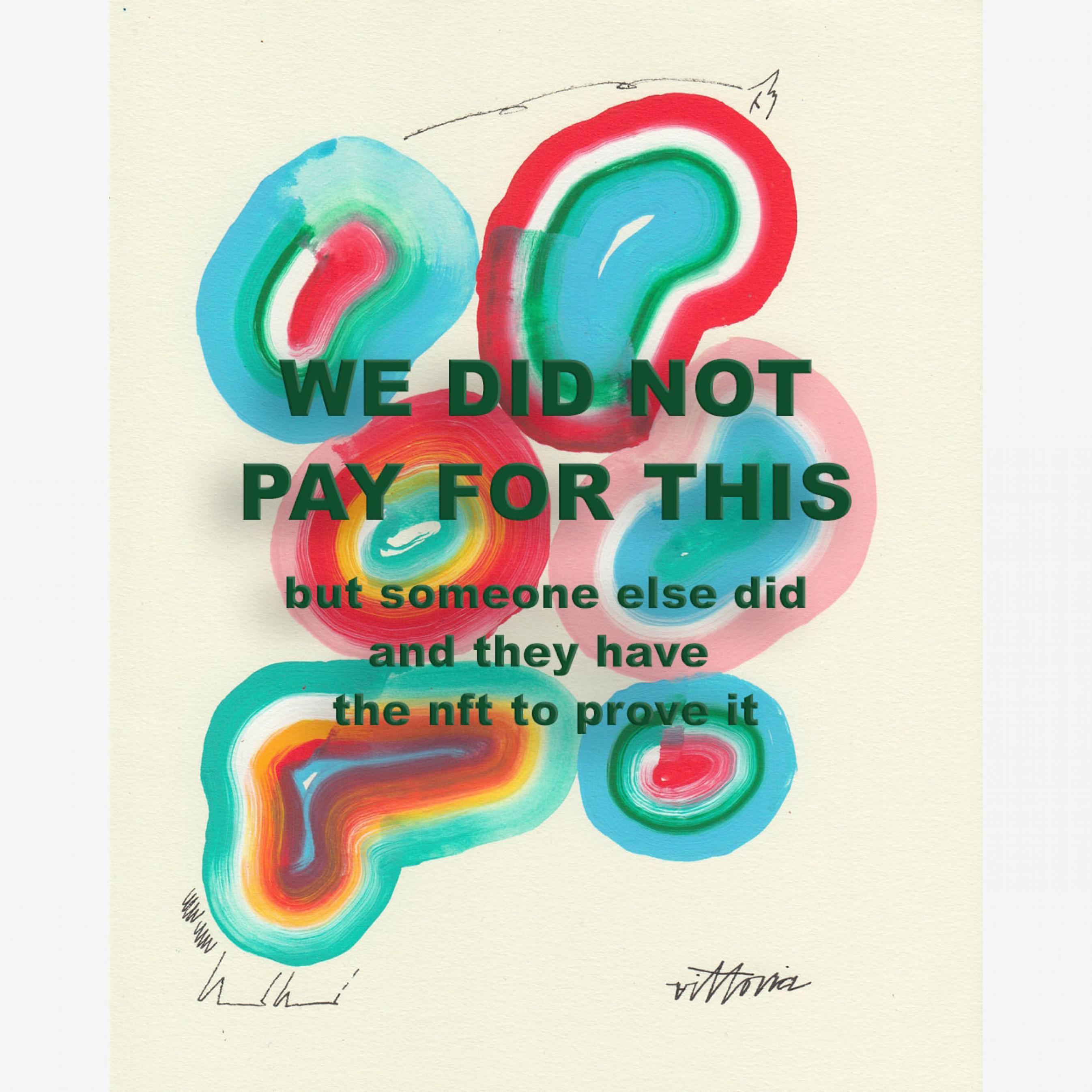
Everything You Want to Know About NFTs But Are Too Afraid to Ask
Psssst…….hey, you. You with the furrowed brow and glazed expression. Yeah I’m talking to you, the one who’s always been an art or music or sports enthusiast but suddenly finds yourself up an NFT creek without a blockchain paddle. There are more of us like you. We know a safe place. Follow us…..
Even if your inbox includes nary an art market newsletter, these days you’re likely drowning in hyperbolic headlines about NFTs of this, that, and the other thing selling for multi-millions. Like the rest of us, you do a little google, get a little info…..and still have no idea what in the ham sandwich it’s all about. So today we bring you the LLA PSA, NFT edition. We’re here to answer the questions that niggle at the back of your mind, even after NFTs have been explained three ways to Sunday. We’ve got you.
First the basics, just in case you skipped the little google. If you did the google, you may proceed directly to the Niggling Questions. NFT stands for “non-fungible token.” The “token” is not just the piece of digital media (say, an early Michael Jordan video clip, a song, or an animated space-agey flower or whatever), but rather the code attached to that media that says it is an authentic original and to whom it belongs. These “tokens” are not interchangeable (whereas one bitcoin, like a dollar bill, is interchangeable with any other bitcoin), hence the “non-fungible.” Because heaven forbid they just call them “non-interchangeable tokens.” Like bitcoin, however, the tokens are built onto a blockchain so that they are counterfeit-proof and not replicable. The tokens and the media are bought and sold via online NFT marketplaces such as Nifty Gateway, Rarible, MakersPlace, Foundation, OpenSea, and others. Which leads us to our first niggling question:
What do you actually get when you buy an NFT?
The concept of what you get when you buy an NFT is the metadata (data that describes other data) on the blockchain that contains the signature of the digital media’s maker (artist’s signature if you will), the authentication of that media, and the record of your purchase of it. So yes, you own a high quality file of that artwork or video or song, but more importantly you own the “token” that SAYS you own it and that it is original.
But what do you get in real life, not in conceptual life? What actually happens in your inbox or wherever when you buy an NFT? In order to answer this question to our own satisfaction, we bought an NFT. We used the site Nifty Gateway, which in recent days partnered with Sotheby’s on their first NFT art auction. Nifty Gateway is one of the NFT marketplaces that allows buyers to make purchases in dollars OR cryptocurrency (the cryptocurrency of choice on most NFT sites is ether, the currency of Ethereum). Some others only allow purchases to be made in ether.
First the basics, just in case you skipped the little google. If you did the google, you may proceed directly to the Niggling Questions. NFT stands for “non-fungible token.” The “token” is not just the piece of digital media (say, an early Michael Jordan video clip, a song, or an animated space-agey flower or whatever), but rather the code attached to that media that says it is an authentic original and to whom it belongs. These “tokens” are not interchangeable (whereas one bitcoin, like a dollar bill, is interchangeable with any other bitcoin), hence the “non-fungible.” Because heaven forbid they just call them “non-interchangeable tokens.” Like bitcoin, however, the tokens are built onto a blockchain so that they are counterfeit-proof and not replicable. The tokens and the media are bought and sold via online NFT marketplaces such as Nifty Gateway, Rarible, MakersPlace, Foundation, OpenSea, and others. Which leads us to our first niggling question:
What do you actually get when you buy an NFT?
The concept of what you get when you buy an NFT is the metadata (data that describes other data) on the blockchain that contains the signature of the digital media’s maker (artist’s signature if you will), the authentication of that media, and the record of your purchase of it. So yes, you own a high quality file of that artwork or video or song, but more importantly you own the “token” that SAYS you own it and that it is original.
But what do you get in real life, not in conceptual life? What actually happens in your inbox or wherever when you buy an NFT? In order to answer this question to our own satisfaction, we bought an NFT. We used the site Nifty Gateway, which in recent days partnered with Sotheby’s on their first NFT art auction. Nifty Gateway is one of the NFT marketplaces that allows buyers to make purchases in dollars OR cryptocurrency (the cryptocurrency of choice on most NFT sites is ether, the currency of Ethereum). Some others only allow purchases to be made in ether.
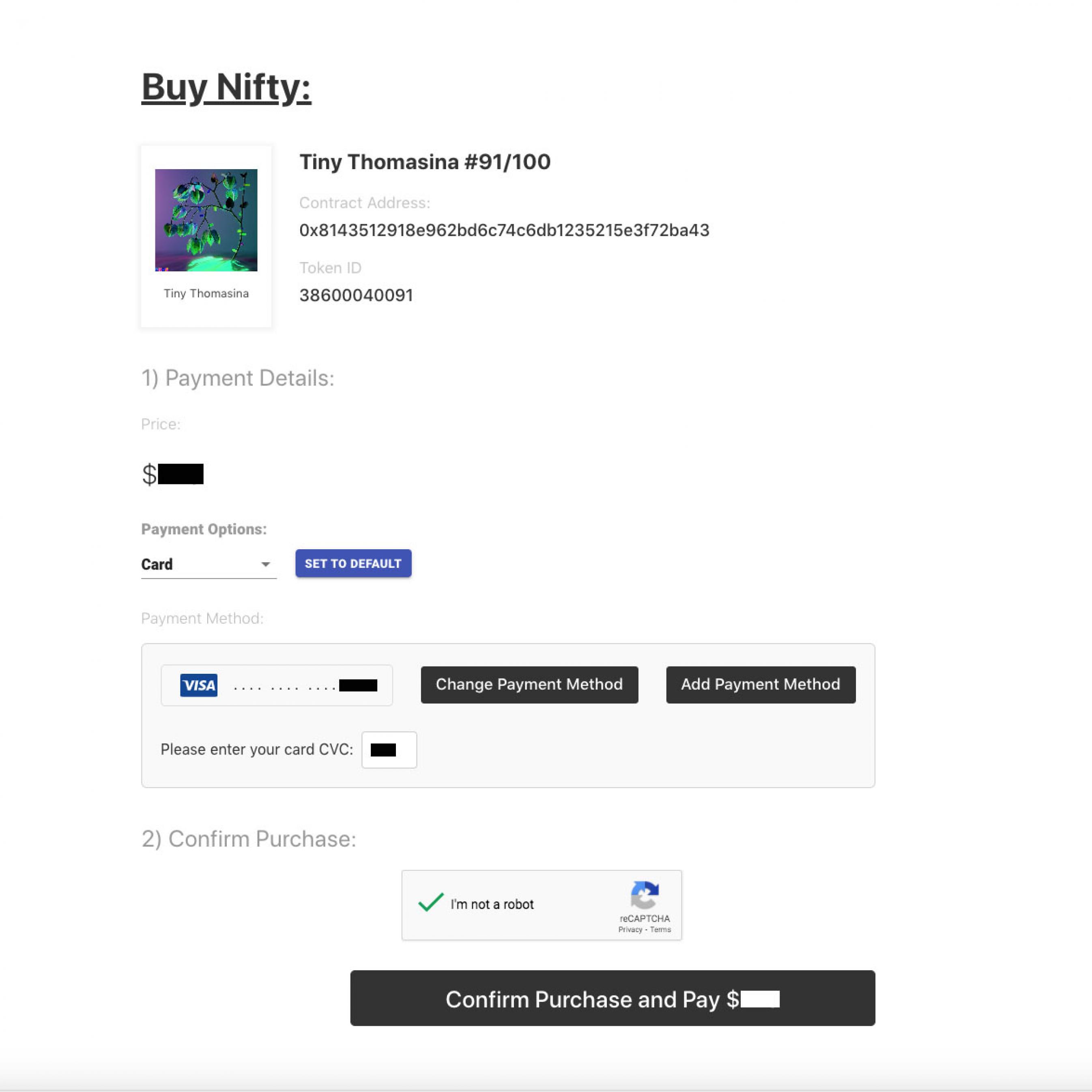
The Nifty Gateway transaction screen
The experience we had of buying an NFT was similar to licensing an image from a site like Getty Images. We created an account with Nifty Gateway, added a credit card to our account, browsed the site for what we wanted to buy, and clicked “Buy Now.” We could have made an offer to the seller for another price, or made a “global offer” to anyone selling an edition of the work we were buying (NFT editions are exactly like editions of fine art prints - an artist can make multiple, numbered copies of a single work). In other places, NFTs are sold in an auction format, the same as the auctions we run here at LLA.
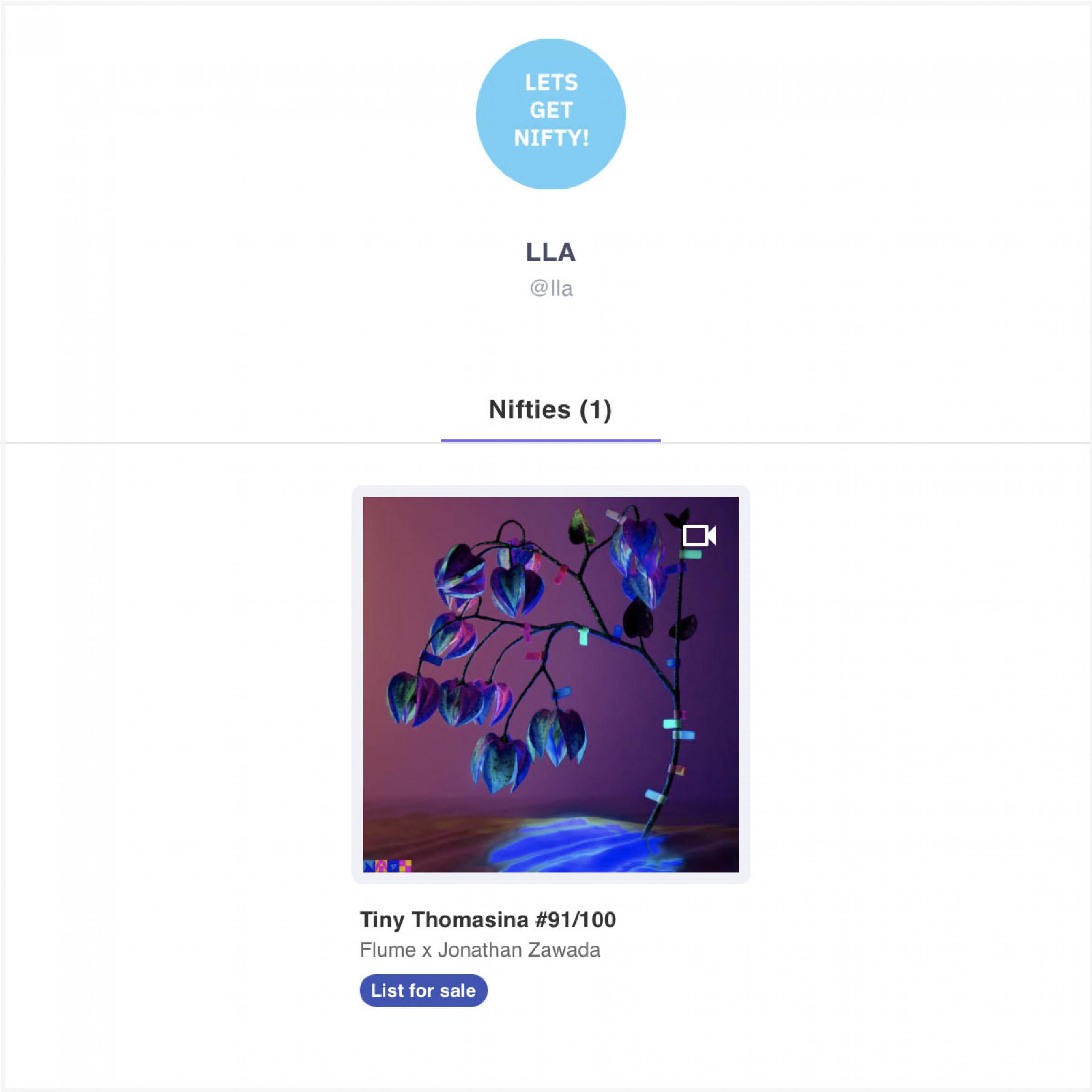
Our Nifty Gateway profile page, where our NFT lives
The piece we bought was a collaboration between the DJ known as Flume and the digital artist Jonathan Zawada. It is number 91 in an edition of 100. Once our purchase of the NFT was complete, a congratulations screen with falling confetti popped up that redirected us to our Nifty Gateway profile. From there we can put the NFT back up for sale on Nifty Gateway, or register a device on which to display the artwork. We could also deposit the NFT (which includes the artwork and the authenticating token) to a cryptowallet if we had one. Otherwise, it just lives in the cryptowallet Nifty Gateway created for us when we engaged in a transaction on their site - basically, in our account on Nifty Gateway.
To sum up, when we bought an NFT we got an entry in our Nifty Gateway account that says we own that NFT, and a link to the artwork. You can view our NFT here.
How do you look at NFT art once you’ve purchased it?
On Nifty Gateway, we can’t actually download the artwork we bought, but we can display it through the Nifty app on any Android-enabled device. On other NFT marketplaces like Rarible and MakersPlace, NFT listings include a note that the artwork can be downloaded or even printed for the owner’s enjoyment. As far as we can tell, Nifty Gateway doesn’t offer that option for Nifties. But the version of your artwork that you would download from these other sites to display or print wouldn’t contain the metadata that makes it part of the blockchain and confirms its authenticity. So while you can have a version of the NFT art or baseball card or video you bought that you can look at off the NFT site or outside your cryptowallet, that version wouldn’t be marked with the token that gives it value.
So wait, can anyone duplicate NFT media then?
Yep. They can duplicate a version of the MEDIA, but not the token. For example: the image at the top of this story. We got that image by simply right-clicking it on an NFT marketplace site and downloading it. It’s not the same high quality resolution that we would get if we paid for it, but it’s the same picture.
So doesn’t that make paying for an NFT of a song or video or image kind of dumb? If anyone can just look at it anywhere or pull it off the internet?
On Nifty Gateway, we can’t actually download the artwork we bought, but we can display it through the Nifty app on any Android-enabled device. On other NFT marketplaces like Rarible and MakersPlace, NFT listings include a note that the artwork can be downloaded or even printed for the owner’s enjoyment. As far as we can tell, Nifty Gateway doesn’t offer that option for Nifties. But the version of your artwork that you would download from these other sites to display or print wouldn’t contain the metadata that makes it part of the blockchain and confirms its authenticity. So while you can have a version of the NFT art or baseball card or video you bought that you can look at off the NFT site or outside your cryptowallet, that version wouldn’t be marked with the token that gives it value.
So wait, can anyone duplicate NFT media then?
Yep. They can duplicate a version of the MEDIA, but not the token. For example: the image at the top of this story. We got that image by simply right-clicking it on an NFT marketplace site and downloading it. It’s not the same high quality resolution that we would get if we paid for it, but it’s the same picture.
So doesn’t that make paying for an NFT of a song or video or image kind of dumb? If anyone can just look at it anywhere or pull it off the internet?
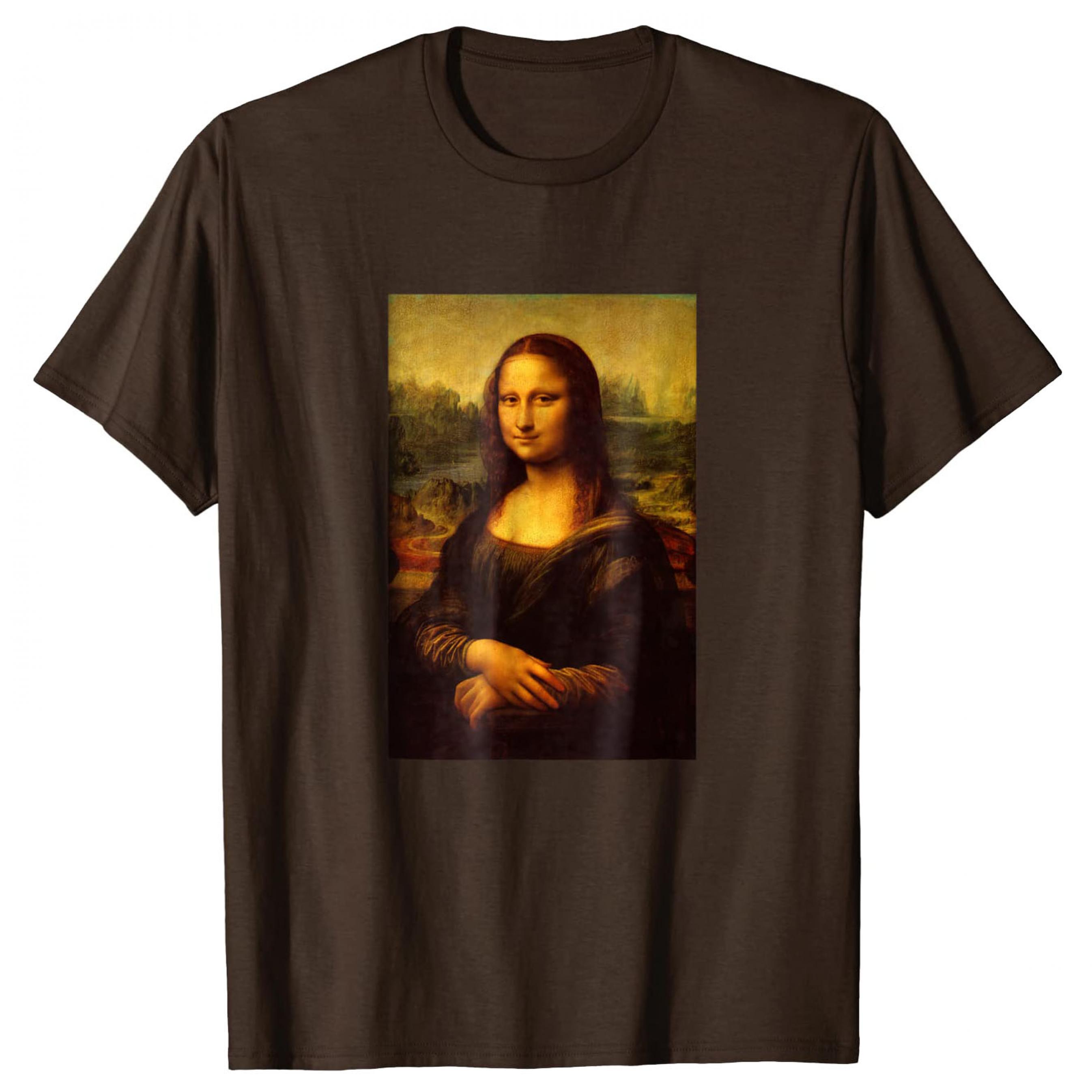
This is not the actual Mona Lisa painted by Leonardo da Vinci.
Well, you can buy a postcard or a t-shirt with the Mona Lisa on it, but that doesn’t mean the actual Mona Lisa painted by da Vinci that lives in the Louvre isn’t really, really valuable. You could even get a super talented art counterfeiter to paint a copy of the Mona Lisa that is basically indistinguishable from the original, and still the original would be vastly more valuable. And so it goes with NFTs. A group of people have decided that it is valuable to have original, authenticated digital files of certain things, and therefore it is. Essentially, because people will pay money for them, NFTs have value. Same with the Mona Lisa.
I understand that blockchain technology was created to make a public, decentralized form of currency. But then who is in charge of recording transactions on the blockchain like the buying and selling of NFTs? And who supervises that those transactions aren’t funky?
It all comes down to the code. Sort of. According to an article in the Harvard Business Review “Unlike political regulation, blockchain governance is not emergent from the community. Rather, it is ex ante, encoded in the protocols and processes as an integral part of the original network architecture. To be a part of a community supporting a blockchain is to accept the rules of the network as they were originally established.” In other words, the transaction protocols built into the blockchain code take over once it is set in motion, and then all disputes are settled by the code.
But while cryptocurrency and NFTs are very, very secure, they don’t operate in a vacuum. They have to be able to interact with the rest of the computing world, which is made by humans, and humans are fallible. And when we recognize fallibility we aren’t very good at not having opinions about how to rectify it. Which has resulted in crypto-community splits like that between Ethereum Classic and Ethereum, which are now two separate blockchains. So while theoretically no one needs to supervise blockchain transactions, when something does go sideways, the startups that run blockchains are having to use their human brains to come up with solutions that their community of investors will accept. So you can think of it kind of like starting a new country: the founding fathers agreed to a set of governing principles. And those work fine until some unforeseen circumstance requires them to be tweaked. And then the cryptobuck has to stop somewhere, whether that was the plan or not.
Can I create my own NFTs and make a fortune?
You can sure try. Anyone can “mint” an NFT through one of the various platforms and attach it to a digital asset. It isn’t free - there are fees for minting NFTs and fees for buying and selling them. And it comes with an ethical cost too - turns out blockchain transactions use an enormous amount of energy. Every single Ethereum transaction uses enough energy to power two average American households for a full day, and the annual carbon footprint of Bitcoin is comparable to that of Argentina.
This has got to be a bubble, right?
It all comes down to the code. Sort of. According to an article in the Harvard Business Review “Unlike political regulation, blockchain governance is not emergent from the community. Rather, it is ex ante, encoded in the protocols and processes as an integral part of the original network architecture. To be a part of a community supporting a blockchain is to accept the rules of the network as they were originally established.” In other words, the transaction protocols built into the blockchain code take over once it is set in motion, and then all disputes are settled by the code.
But while cryptocurrency and NFTs are very, very secure, they don’t operate in a vacuum. They have to be able to interact with the rest of the computing world, which is made by humans, and humans are fallible. And when we recognize fallibility we aren’t very good at not having opinions about how to rectify it. Which has resulted in crypto-community splits like that between Ethereum Classic and Ethereum, which are now two separate blockchains. So while theoretically no one needs to supervise blockchain transactions, when something does go sideways, the startups that run blockchains are having to use their human brains to come up with solutions that their community of investors will accept. So you can think of it kind of like starting a new country: the founding fathers agreed to a set of governing principles. And those work fine until some unforeseen circumstance requires them to be tweaked. And then the cryptobuck has to stop somewhere, whether that was the plan or not.
Can I create my own NFTs and make a fortune?
You can sure try. Anyone can “mint” an NFT through one of the various platforms and attach it to a digital asset. It isn’t free - there are fees for minting NFTs and fees for buying and selling them. And it comes with an ethical cost too - turns out blockchain transactions use an enormous amount of energy. Every single Ethereum transaction uses enough energy to power two average American households for a full day, and the annual carbon footprint of Bitcoin is comparable to that of Argentina.
This has got to be a bubble, right?
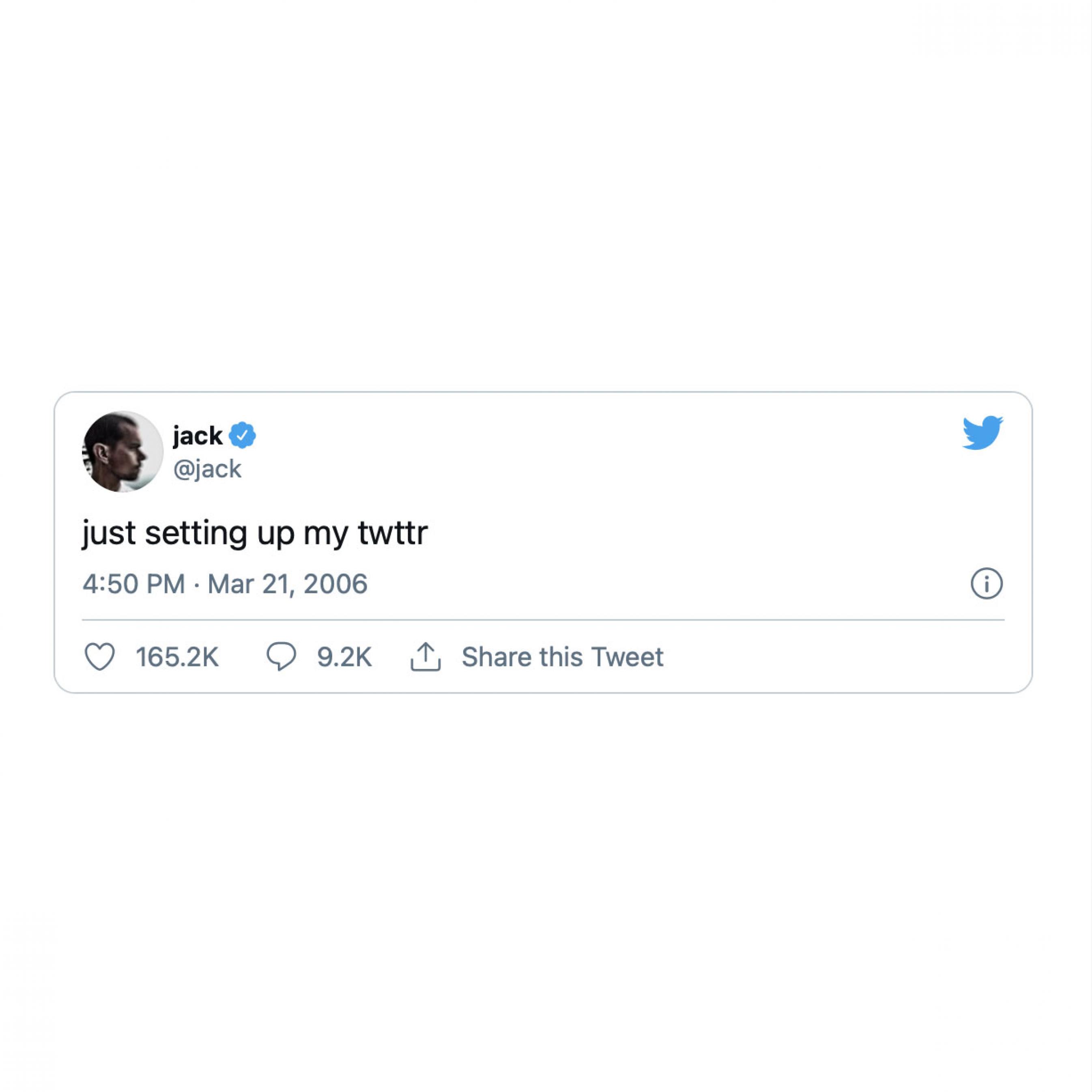
Twitter founder Jack Dorsey's first ever tweet, which he sold as an NFT for $2.9 million dollars. He donated the proceeds to charity.
Most things are at some point. And yes, the consensus is that the frantic trading of NFTs that has occurred since the beginning of this year will slow to a more dignified pace. We wouldn’t be surprised if the silliest types of NFTs fall by the wayside (and there will have been more ridiculous things on the internet if they don’t). But we haven’t noticed culture going less digital with the passage of time, and if NFTs solve the problem of piracy in a world where the things we care about are online, then they’re probably here to stay.

